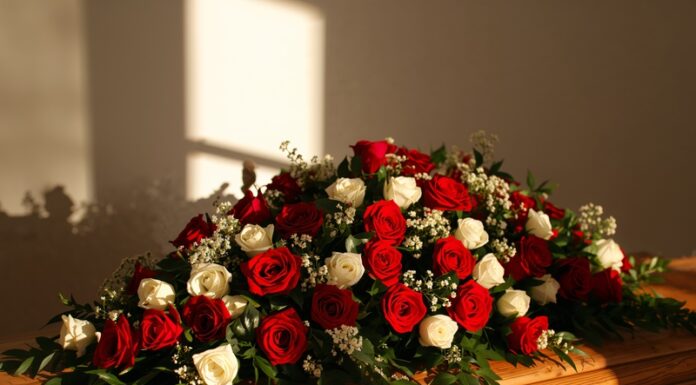The sudden death of former Kenyan Prime Minister Raila Odinga on Wednesday, October 15, 2025, sent shockwaves through Kenya and beyond, as thousands of mourners gathered to honor a man who spent decades fighting for democratic reform in East Africa. The 80-year-old political icon collapsed during a morning walk while receiving medical treatment in India’s Kerala State, suffering a cardiac arrest that proved fatal despite resuscitation efforts at Devamatha Hospital.
Odinga’s activism and five presidential campaigns over three decades made him one of Kenya’s most influential opposition leaders, even though he never achieved his ultimate goal of becoming president. His political journey helped transform Kenya from single-party rule into what many describe as a vibrant multiparty democracy, earning him reverence as a statesman who prioritized democratic principles over personal power.
Indian Prime Minister Narendra Modi expressed his condolences on social media, describing Odinga as “a towering statesman.” Kenyan President William Ruto declared seven days of national mourning with flags at half-staff and announced that Odinga would receive a state funeral, a rare honor typically reserved only for sitting or former presidents.
The mourning period quickly turned violent as massive crowds overwhelmed security measures at multiple public viewing events. On Thursday, October 16, when Odinga’s body arrived from India on a chartered airplane and received a water cannon salute at Nairobi’s main airport, eager mourners walked the entire 18 miles alongside the military vehicle carrying his casket, waving twigs as symbols of peace. A subsequent memorial on Saturday in Kisumu saw dozens injured as crowds surged, according to the Kenyan Red Cross and Reuters.
Violence erupted at a 60,000-capacity soccer stadium where tensions rose after mourners breached the presidential pavilion. Police responded with tear gas, triggering a stampede at the stadium gates that injured numerous people and forced dignitaries to lock themselves in rooms for safety. At least three people died during Thursday’s events, with police firing live bullets to control the surging crowds.
The chaos continued on Friday, October 17, during the state funeral service at another Nairobi stadium. A stampede killed two additional people and injured more than 100 others as crowds viewed Odinga’s flag-draped casket following an Anglican Church service. Doctors Without Borders reported treating 163 patients at the scene, with 34 requiring hospital transport.
Odinga’s brother Oburu urged Kenyans to remain peaceful, stating, “Raila should not be teargassed in death. He has been teargassed enough when he was alive, please let us not cause a situation where he is teargassed again.” Mourners at the airport had expressed their devotion to the leader they called “Baba,” a Kiswahili term meaning father figure. One mourner, Beatrice Adala, told reporters they were mourning as a nation because Odinga was the defender of the people.
Born January 7, 1945, in Kisumu near Lake Victoria, Odinga was the son of Jaramogi Oginga Odinga, Kenya’s first vice president. After studying engineering in East Germany, he returned to teach at the University of Nairobi and established successful businesses, including a liquid petroleum gas cylinder company.
His political activism against President Daniel arap Moi’s single-party rule in the 1980s led to accusations of involvement in a 1982 coup attempt by air force officers. Though treason charges were dropped, Odinga spent much of the next decade imprisoned under harsh conditions, including alleged torture. He briefly fled to exile in Europe in 1991 before returning to win a parliamentary seat in 1992 as an opposition lawmaker representing Nairobi.
The 2007 presidential election marked Odinga’s closest approach to the presidency. Running as a member of Kenya’s Luo ethnic group, he garnered massive support and faced incumbent Mwai Kibaki in what became the closest race in Kenyan history. Official results showed Kibaki winning with 46 percent against Odinga’s 44 percent, but the opposition rejected these figures amid concerns about electoral irregularities.
The disputed results triggered ethnic violence that killed hundreds and shattered Kenya’s reputation as a stable democracy. Although Odinga was never accused of inciting violence, the International Criminal Court opened investigations in 2010 that included future presidents Ruto and Uhuru Kenyatta among six suspects. No successful prosecutions resulted from these cases.
International mediation led to a unity government with Odinga serving as prime minister from 2008 to 2013. He ran unsuccessfully for president five times (1997, 2007, 2013, 2017, 2022), including against Ruto in 2022. Earlier in 2025, the former rivals signed a political pact that brought opposition party members into Ruto’s cabinet following months of anti-government protests.
At Friday’s state funeral, Ruto led mourners in singing Odinga’s favorite song, Harry Belafonte’s “Jamaica Farewell,” and credited him with helping steady the nation during recent turmoil. Political analyst Herman Manyora noted that the massive outpouring of grief reflected Odinga’s willingness to sacrifice everything for his people.
Odinga’s family attended the services, with his wife, Ida, urging peaceful mourning and noting her husband’s hatred of dishonesty and greed. His daughter Winnie, who was with him in India, said he died with dignity after extending his usual morning walk from two to five rounds. Following his request for a quick burial within 72 hours, rather unusual for prominent Kenyan leaders according to CNN. A final public viewing was held on Saturday, October 18, in Kisumu before his Sunday burial in his rural home of Bondo.








